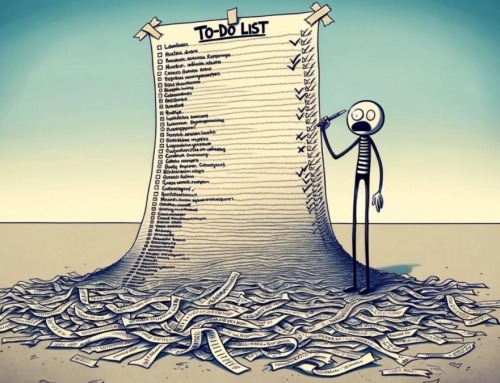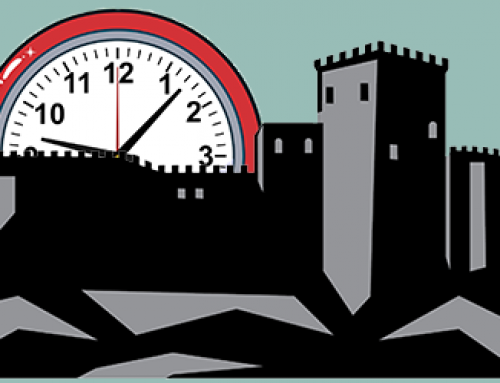When it comes to setting goals, sometimes it’s best to go big or go home! Historically, some of the most famously successful goals have been “Big Hairy Audacious Goals” (BHAGs). This term was coined by James Collins and Jerry Porras in their 1994 book, Built to Last: Successful Habits of Visionary Companies.
A Big Hairy Audacious Goal is a strategic business goal that is designed to focus an entire organization on an audacious medium- to long-term goal that will carry it toward a visionary future. According to Collins and Porras, “A true BHAG is clear and compelling, serves as a unifying focal point of effort, and acts as a catalyst for team spirit.”
BHAG to the moon and back
Perhaps the best example of a BHAG is U.S. President John F. Kennedy’s goal of landing astronauts on the Moon. In a speech to a Joint Session of Congress in 1961, Kennedy stated:
“I believe that this nation should commit itself to achieving the goal, before this decade is out, of landing a man on the Moon and returning him safely to the Earth. No single space project in this period will be more impressive to mankind, or more important for the long-range exploration of space; and none will be so difficult or expensive to accomplish.”
This goal was certainly audacious! Achieving the goal would require dramatic technological advancement and an unprecedented level of investment, with costs estimated to reach $40 billion at the time. But manned space flight would also be a dangerous and potentially deadly proposition, and the previous U.S. President, Dwight Eisenhower, had actually opposed a manned program.
However, the goal was clear and compelling, particularly in light of Soviet cosmonaut Yuri Gagarin’s successful space flight just weeks earlier, which heightened fears that the U.S. would fall behind the Soviet Union in technology and development.
With the chance for Americans to gain an upper hand in global prestige and learn important technological lessons that could be applied to national defense and other areas, the goal indeed became a catalyst for team spirit and a unifying focal point of effort.
And the results were remarkable. Right on schedule, just over eight years after President Kennedy had declared the BHAG, the U.S. landed the first manned spacecraft on the Moon on July 20, 1969.
A car in every garage BHAG
American business history is filled with similar BHAGs, and they have driven some of the most successful companies in their growth from startups to global powers.
In 1909, Henry Ford famously declared, “I’m going to democratize the automobile. When I’m through, everybody will be able to afford one, and about everyone will have one.”
A computer on every desk BHAG
In the late 1970s, Microsoft co-founders Bill Gates and Paul Allen began using the visionary phrase, “A computer on every desk and in every home.”
Information at your fingertip BHAG
And, reflecting an audaciousness in scope that is unrivaled in recent history, Google’s mission is to “Organize the world’s information and make it universally accessible and useful.”
All of these goals were remarkably ambitious because they were declared at a time when these companies were in their infancy, and the relevance of their goals and the possibilities of success were open to skepticism and criticism.
In the case of Henry Ford, his BHAG came just one year after he had begun selling his first cars, and fewer than 11,000 had been sold to date. A new car cost significantly more than the average wage in the U.S., so the prospect of democratizing the automobile seemed far-fetched.
In the case of Microsoft, even their peers in the computing field questioned why people would want computers in their home, and some thought that their BHAG was “silly”.
Google’s notion of organizing the world’s information and making it universally accessible could have easily been seen as overly ambitious and unrealistic when Google had begun as merely an Internet search engine.
Nonetheless, Ford Motor Company, Microsoft, and Google have gone on to become some of the most iconic brands and most successful companies in the world, and all have achieved their goal in large part or have proven that it is achievable.
The automobile has become ubiquitous in the U.S., thanks in large part to Henry Ford’s efficient systems and processes that led to dramatic increases in production and decreases in costs.
The desktop and home computer became a reality in America, and, according to the U.S. Census Bureau, in 2015, 86.8 percent of all households in the United States had a computer at home.
And, with Google search engines, databases, data storage and servers, scanning of documents and library assets, and interconnectivity of mobile and desktop devices through the Internet, a huge portion of the world’s information is becoming increasingly organized and accessible.
The real work of BHAGs
Of course, setting and declaring a BHAG is one thing; doing the work and organizing the effort to achieve it is another. This is why, in all cases, it is important to engage in goal planning, understand the common problems with traditional goal setting, avoid the wrong ways to use goals, and apply a progressive methodology that can ensure success.
By breaking your BHAG into attainable, short-term goals, focusing on frequency of short-term goal achievement, measuring and reviewing your efforts, and avoiding the common pitfalls and problems of goal setting and planning, you can turn strategic vision into reality. And your company may join the ranks of global brands that have been built on similarly big, hairy, and audacious goals.






